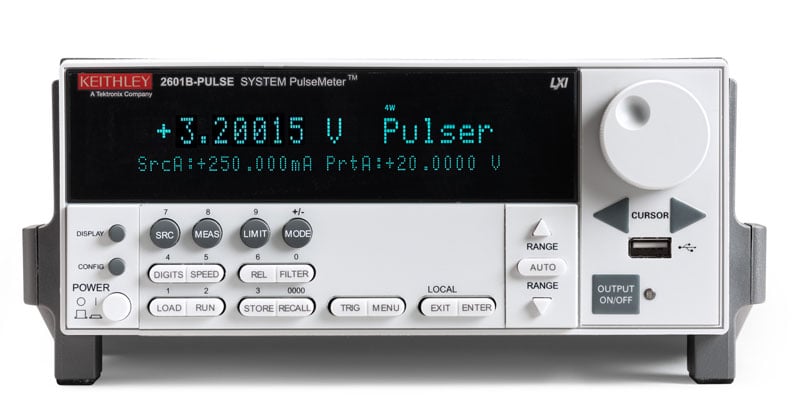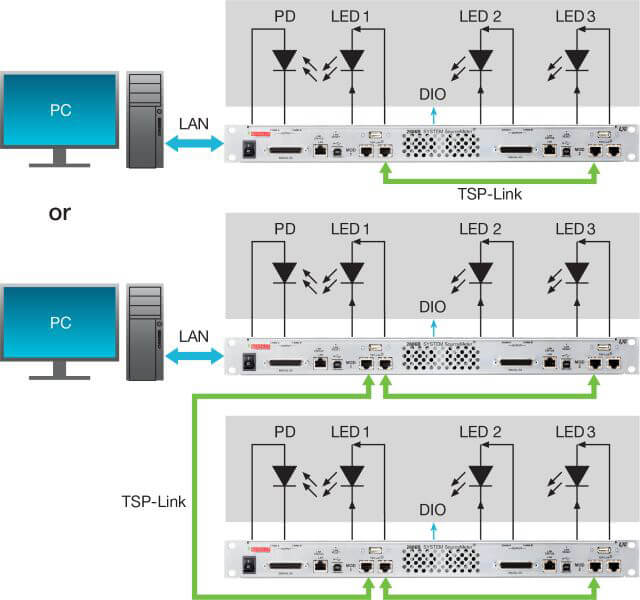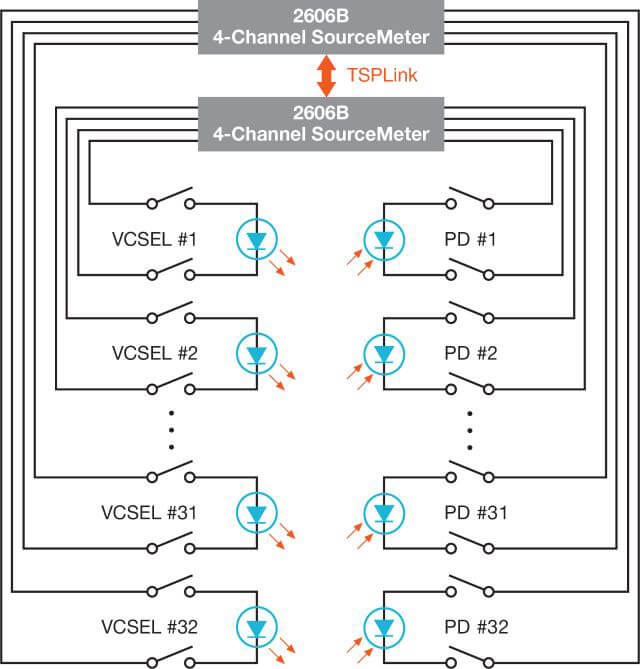
Contact us
Call
Call us at
Available 6:00 AM – 5:00 PM (PST) Business Days
Download
Download Manuals, Datasheets, Software and more:
Feedback
3D Sensing driving need for Electrical Test of VCSELs, laser diodes and photo diodes

3D sensing augments a camera's object & facial recognition.
3D sensing is a depth sensing technology that augments camera capabilities for facial and object recognition in augmented reality, gaming, autonomous driving and a wide range of applications.
- One way to sense 3D is using structured light. Coherent infrared light is transmitted onto an object with a structured pattern. The reflected light can be decoded to construct a 3D image.
- Another way to sense 3D is to use Time of Flight (ToF). A light source transmits a series of infrared light and the photon phase difference to the light bounced off an object is used to sense the proximity of an object.
Get 2 in-depth application notes:
- Laser Diode Array Test for 3D Sensing
- Enhancing Trigger Synchronization for High Volume Production Testing of VCSELs


Diode-based optical devices enable 3D sensing.
Diode-based devices such as laser diodes, high brightness LEDs (HBLED), and photodiodes (PD) are key optical devices that enable 3D sensing.
- Laser diodes are capable of outputting a narrow and coherent light beam. Two common types of laser diodes are edge emitter laser (EEL) and the fast-growing VCSEL (vertical cavity surface emitting laser). VCSEL combines the advantage of low cost manufacturability, optical efficiency, temperature stability, and large 2D arrays for increased power. EEL operates at a higher frequency that can travel hundreds of miles without loss in a fiber medium commonly for optical communication.
- HBLEDs or LEDs disperse incoherent light in a wide pattern. They are the most efficient source of high quality white light, hence great for illumination. Efficiency droop, limited modulation capability, and resolution make them only suitable for some applications.
- PDs detect and convert light into current. Very sensitive instruments for low PD current measurement are required to characterize the full range light intensity of the light source properly.
Learn 10 tests for the laser diodes at the heart of 3D sensing.
Keithley instruments perform electrical testing on diode-based devices.
Wavelength stability over the entire operating temperature of these devices is critical to maintaining precision and minimize noise in received signals. Electrical efficiency measurement through precision trigger and synchronization of pulse width and duty cycle further optimize the required intensity and resolution of illumination. These directly impact the heat dissipation, power consumption, and battery life of the end system.
Keithley Source Measure Unit instruments perform such electrical tests as light intensity, forward voltage, lasing threshold current, quantum efficiency, dark current, the presence of “kink” or kink test, slope efficiency, thermistor resistance, temperature, capacitance, and L-I-V pulse testing.

Featured Content
Recommended Equipment
2601B-PULSE 10 μs Pulser/SMU

Series 2600B SMU

DMM7510 7½-Digit Graphical Sampling Multimeter

2510 and 2510-AT TEC Instruments

2651A High Power SMU Max 50A

6485 5½-Digit Picoammeter


